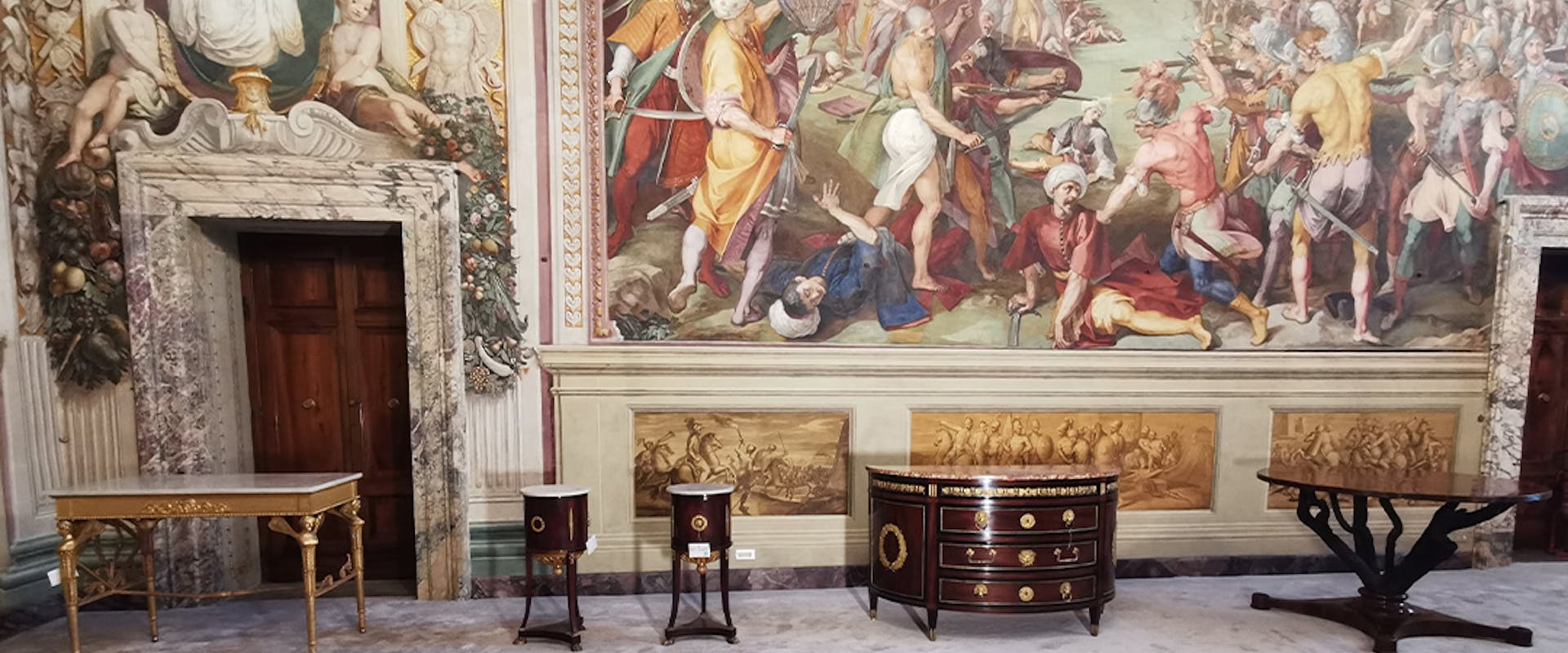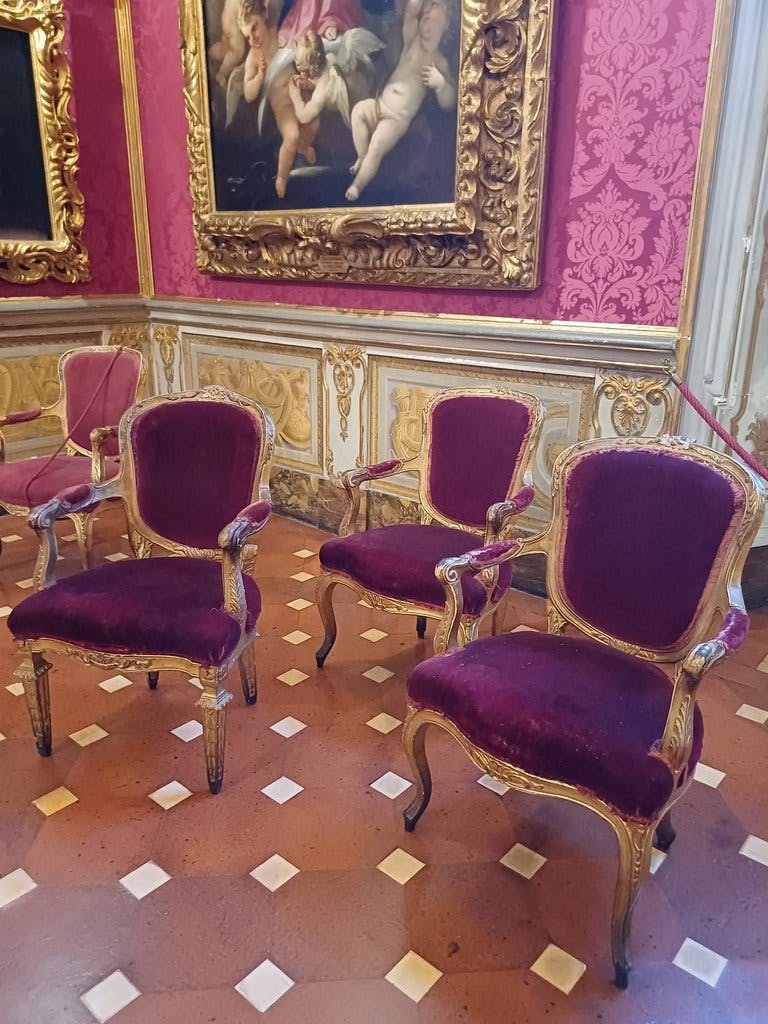News from the Palace!
Pitti Palace furniture ready to be restored
Enhancing Pitti Palace also means to maintain its furniture scattered in its many rooms, which over the centuries have housed the private apartments as well as the ceremonial halls of 3 ruling dynasties, the Medici, the Habsburg-Lorraine and the Savoy.
For this reason, in the past weeks, some important pieces have been selected to be restored and renewed specifically. The maintenance work is starting on the conspicuous group of chairs from the Lorraine period, which are part of the furnishings of the Palace’s rooms on the first floor, now home to the Palatine Gallery. There are more than 70 examples of chairs, including the 49 with armrests that from around 1790 the court cabinetmaker Carlo Toussaint had provided to the Wardrobe of Pitti Palace to furnish "the ceremonial halls with Pietro da Cortona's stuccoes".
By checking the historical inventories of the Palace, it is possible to reconstruct the replacement of the different fabrics used over time to cover those chairs. Thus, we know that the current crimson red velvet was chosen in 1911 to replace the previous moiré fabric, which in turn had been put in place of a 'cordellone amuer all in crimson silk garnished with a coloured braid' and a 'crimson red damask'.
Temporarily taken away from their rooms, the chairs are undergoing a process of consolidation, reupholstering and relining.
Part of the Round Room’s furnishings in the Royal Apartments of Pitti Palace, also the sumptuous desk made of veneered wood, malachite and gilded bronze is going to be checked and restored. The precious piece of furniture, dating back to the mid-19th century, probably arrived to the Royal Palace as a gift from the Demidoffs to the Grand Dukes’ family and since then it has never left the Palace.
Coming from the Winter Apartment on the second floor of the Palace, the two Louis XV-style chests of drawers, decorated with gold leaf and mother-of-pearl inserts, are also ready to be cleaned and checked. The lacquered panels adorning their fronts and sides are Japanese, dating from the Momoyama period (1573-1615). The other furnishings were probably made in France around the mid-18th century and were recorded in Pitti Palace’s inventories in 1771.
Similarly, thanks to a preliminary restoration and dusting work, the 1807 table is going to shine again in the Gallery of Modern Art on the second floor of Pitti Palace, where visitors are accustomed to admiring the perfect match between its trunks and the naturalistic landscapes on display in the hall.
Once returned to their original splendour after the end of conservation works, the furnishings are going to be temporarily arranged in a new location on view in premises generally open to the public. Along the ordinary museum itinerary, visitors will thus have the opportunity to better admire the characteristic features of the furniture that sometimes goes unnoticed compared to painted and sculpted masterpieces, while it instead gives evidence of the historical changes that occurred in Pitti Palace over the centuries. Keep following us and we will tell you more!

